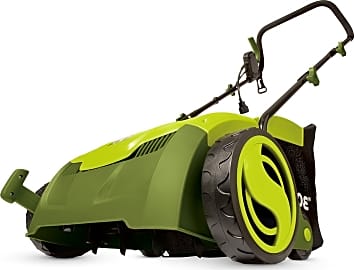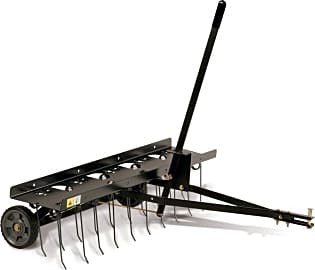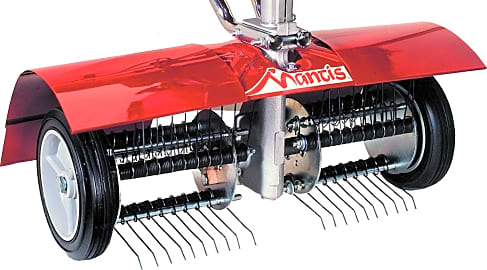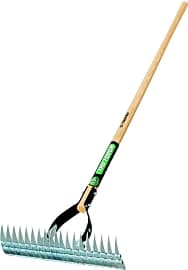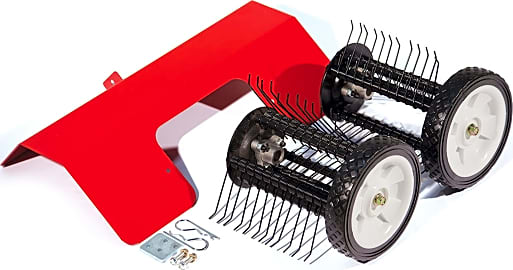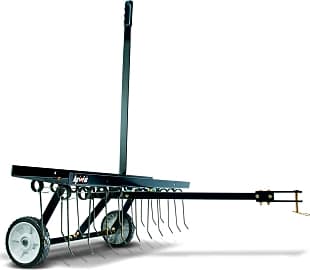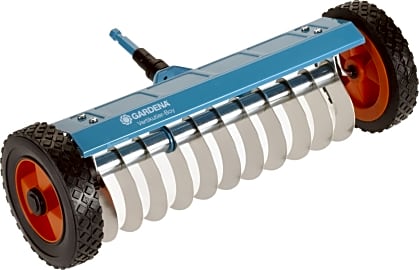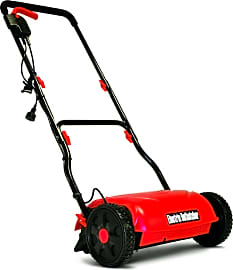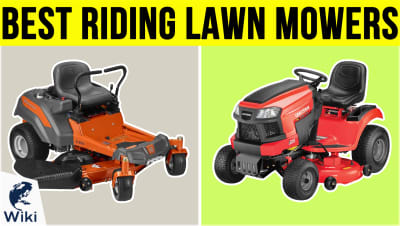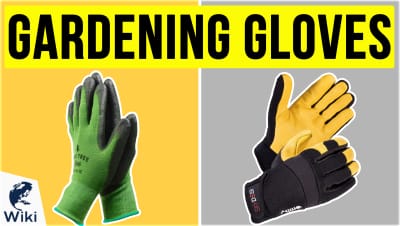The 10 Best Dethatchers

This wiki has been updated 41 times since it was first published in April of 2015. Too much dead organic matter can be detrimental to the health of your grass, as it may not allow enough water, air, and other nutrients into your lawn's root system. But you can cultivate a yard that will be the envy of the neighborhood by clearing out all the clutter with one of these dethatchers. We've included manual, electric, and tow-behind models to suit every plot size. When users buy our independently chosen editorial selections, we may earn commissions to help fund the Wiki.
Editor's Notes
December 22, 2019:
While many people may not do it, dethatching is actually very important to keeping a healthy lawn. Just as much so as using a high-quality fertilizer, in fact, so if you are trying to get the best looking yard on the block, it is worth the time and effort. Just make sure to only do it when your grass is actively growing, preferably in early spring.
For those who have a small to medium-sized yard and want to get the job done with as little physical effort as possible, we recommend the Greenworks 27022, Sun Joe AJ801E, and Agri-Fab Electric 45-0472. All three of these are electric models, so you won't have to put in too much elbow grease, and are compact enough that they can easily be maneuvered around obstacles and stored when not in use.
However, if you have a large property and use a riding mower or tractor, a tow-behind model like the Brinly DT-40BH and Agri-Fab 45-0294 will be the most efficient option for you. These both have a 40-inch path that will make short work of most yards. They also offer an adjustable depth, allowing you to get deep at the roots when needed.
There is no way around the fact that manual models will require some serious effort on your part. However, they are the most affordable, and if working on a very small lawn, sometimes the best choice. Of the three fully manual options on our list, the Gardena 3395 will require the least physical exertion, as it sits on wheels and easily rolls over grass. However, the downside to this design is that you cannot adjust the depth.
Special Honors
Husqvarna DT22 The DT22 is a rugged, gas-powered model that can easily stand up to commercial use. It runs on a Briggs & Stratton engine and features a standard flail blade that relies on centrifugal force to effectively remove stubborn, matted thatch. Also, it offers seven pre-set depth options. husqvarna.com
BlueBird Power Rake PR22 With a 22-inch path, this Bluebird Power Rake is suitable for medium to large yards. It is a versatile option that can be converted into a seeder with some optional accessories, and it includes an easy-to-empty five-bushel collection bag. bluebirdturf.com
Maintaining A Lush And Healthy Lawn
Thatch is the layer of organic material that builds up atop the soil and underneath the green blades of grass at the upper layer of a lawn.
Whether one manages the grounds at a golf course or park, or if he or she is working to establish and maintain a lush, verdant lawn for their own property, most people who have tried to create a uniformly green lawn will agree that it is a difficult task to say the least.
The health of your lawn is affected by everything from soil type to pH, from the hours of sunlight it sees, to the amount of rainfall your area receives, and the irrigation you can provide, and of course based on the way the property is used.
If you have the luxury of time, energy, and the budget to start a lawn from scratch, the effort and cash you expend initially will result in the healthiest possible lawn. When you start working a plot of land by removing all old grasses, then till it into fresh, aerated soil, and then pick the proper seed or sod varieties for your region and the time of year, you can almost be assured of a healthy, vibrant lawn, especially if you maintain it properly. These round up to quite a bit of variables, all of which depend on one's willingness to maintain such a schedule over the course of the first several weeks.
In most cases, however, a person tends to find himself or herself faced with the task of lawn restoration. This process usually comes at the start of the spring, when plants are just starting to grow again after the winter's thaw, or in the early fall, when the summer heat is no longer so oppressive (and often lethal to tender new plants).
If your lawn is in generally good condition but needs help in certain areas where patches have died or where weeds have intermingled, a mix of re-seeding and weed control should be sufficient for yard restoration. When re-seeding (also called overseeding) you might want to resist using the most aggressive, densely growing seed varieties such as Kentucky Bluegrass. While such cultivars certainly take hold quickly and grown rapidly, they have a tendency to create excessive thatch in many properties, especially those largely seeded with slower growing, less tenacious grass varieties.
Avoiding excessive thatch is a critical for maintaining a healthy lawn. In fact, before you can even help necessitate your grass, you might need to remove the thatch already built up therein. Thatch is the layer of organic material that builds up atop the soil and underneath the green blades of grass at the upper layer of a lawn. It is made up mostly of dead grass, with other material, such as leaves, brambles, and weeds, that is not being broken down fast enough for the soil to reclaim.
A thatch layer less than a half inch thick is considered positive as it helps create a thermal barrier against extreme heat and cold, and holds some moisture. While a bit of thatch can actually be beneficial for a lawn, too much thatch can prevent water from getting down to the grassroots, can harbor pests, and can suffocate healthy grass. Excessive thatch can also damage the aesthetic appeal of your yard.
Choosing The Right Dethactcher
Once you have determined that your grass has too much thatch built up for its own good (you can determine this by using a shovel to cut out and lift up a portion of the grass; look for a layer of thatch, which will be brownish-tan in most areas, that is more than half an inch thick and/or that seems to be strangling healthy blades of grass), you must determine which dethatching tool is right for your property.
These rugged accessories can make short work of even deep, stubborn thatch, and will save you hours of time and effort.
With extreme effort, a standard garden rake can remove plenty of thatch. But it will also pull up healthy grass, and it will likely lead to quite a back ache, if not an injury. It is a better idea by far to invest in a dedicated detaching tool. The right choice for you will depend first and foremost on the size of the lawn you must manage. If you have a property of only a few thousand square feet, then a manually powered dethatcher that you pull behind you while walking should work fine and should cost no more than $75 at most.
For somewhat larger properties, or for those who need assistance with manual labor due to age, injury, or infirmity, there are multiple motor powered dethatchers on the market, many of which deliver power assisted driving and pack numerous dethatching tines into their frames.
And finally, if you own or manage a property large enough to warrant a riding lawn mower, then you will most likely need a towed dethatcher that can be connected to the back of your mower or compact tractor. These rugged accessories can make short work of even deep, stubborn thatch, and will save you hours of time and effort.
Using Your New Dethatcher
Before you set out to remove your yard's thatch, first make sure you know how much thatch you want to extract, and how much -- if any -- you want to leave behind as a protective barrier. Check a sample of the yard to determine thatch thickness, then set your dethatcher depth accordingly. You might want to cut out a chunk or yard after a pass with the dethatcher to make sure you have removed the proper amount before you attend to the entire property.
Make sure to use your dethatcher when your yard is dry; don't start the process immediately after rainfall or irrigation. It is too easy to accidentally pull healthy grass out of soggy soil.
Likewise, try to avoid dethatching when the beating sun will fall directly on the grass right after the process. Tender grass and exposed soil can be damaged and dried out by excessive sunlight, so the dethatching process is best completed in the earlier morning or in the afternoon on hotter, sunnier days.



